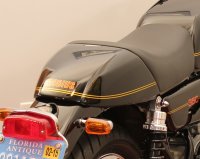buzznichols
Been Around the Block
Sooo...
I'm gearing up to tackle a composite (fiberglass and kevlar) tank build. I've been researching epoxies, and everybody seems to agree West System is the bee's knees. However, that stuff is damn spendy and I'm on a shoestring budget. Marpro makes an epoxy that says "compare to West Systems" and it's a heck of a lot cheaper. However, I don't really know what it is I should be comparing chemically. I'll be laying it up on an EPS foam plug, so vinylester is out of the question.
1st: does anybody know anything about Marpro epoxy, or what chemical properties I should be looking for in an epoxy for a composite tank?
2nd: If I lay up the first couple layers with epoxy (West System or whatever), can I then switch over to polyester/vinylester/whatever without the resins seperating or otherwise disagreeing?
I'm gearing up to tackle a composite (fiberglass and kevlar) tank build. I've been researching epoxies, and everybody seems to agree West System is the bee's knees. However, that stuff is damn spendy and I'm on a shoestring budget. Marpro makes an epoxy that says "compare to West Systems" and it's a heck of a lot cheaper. However, I don't really know what it is I should be comparing chemically. I'll be laying it up on an EPS foam plug, so vinylester is out of the question.
1st: does anybody know anything about Marpro epoxy, or what chemical properties I should be looking for in an epoxy for a composite tank?
2nd: If I lay up the first couple layers with epoxy (West System or whatever), can I then switch over to polyester/vinylester/whatever without the resins seperating or otherwise disagreeing?





